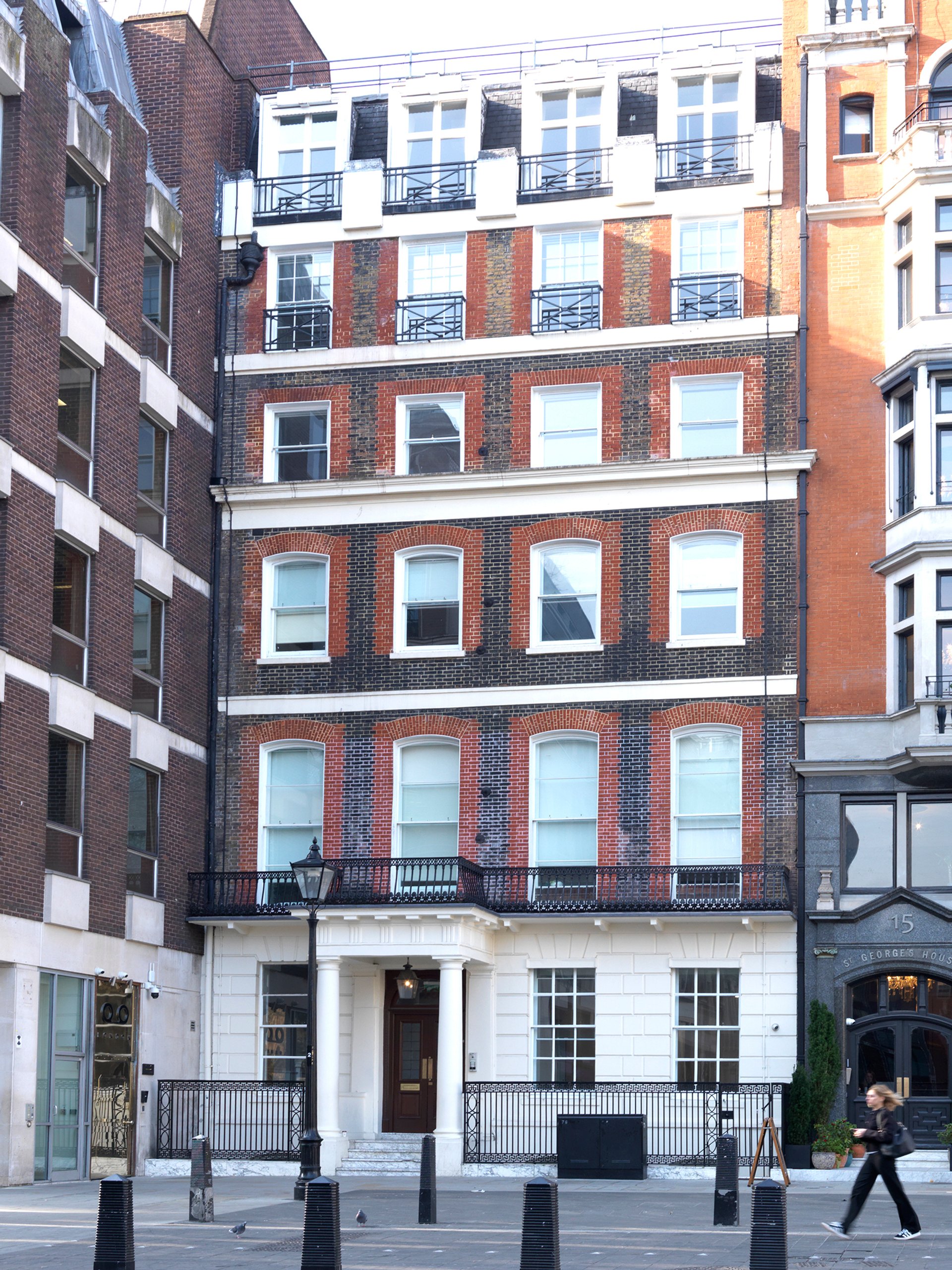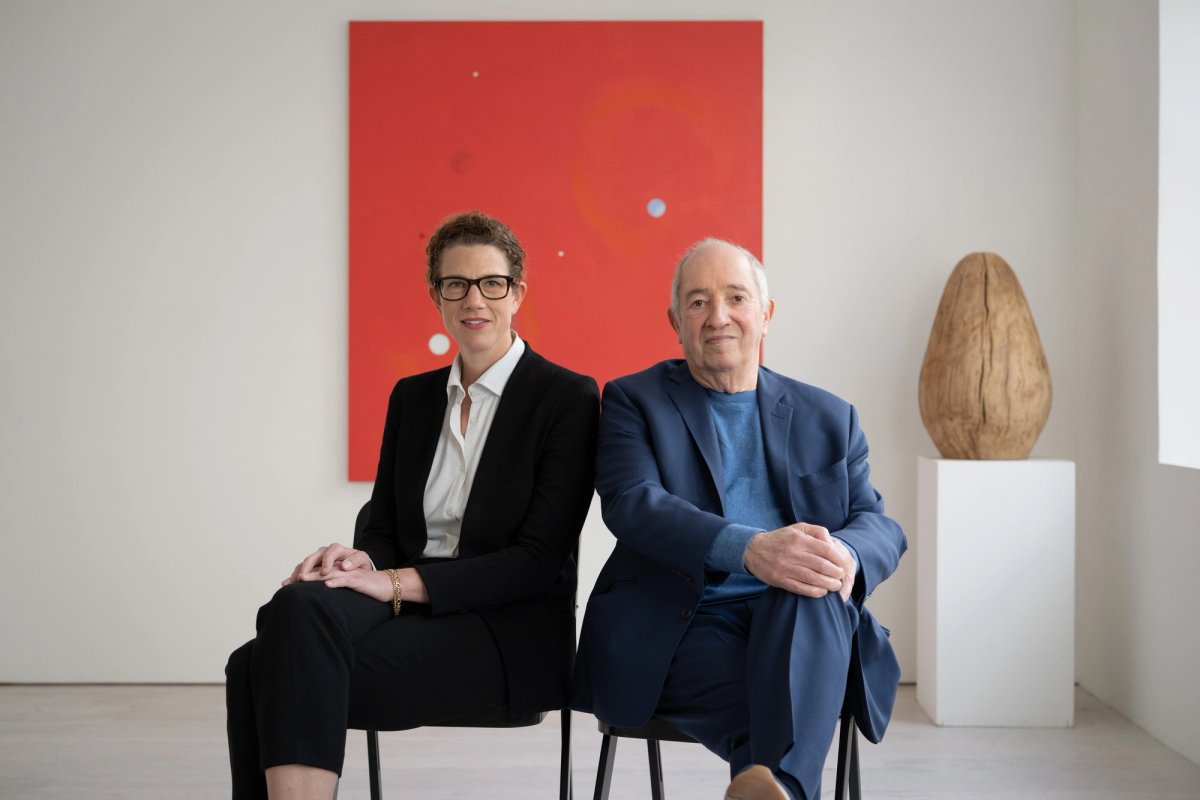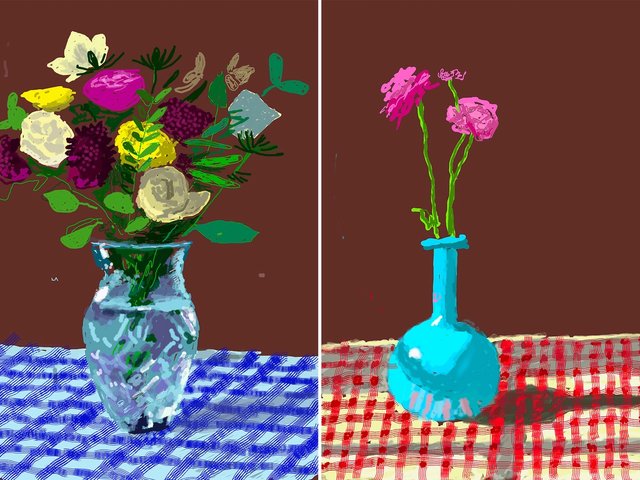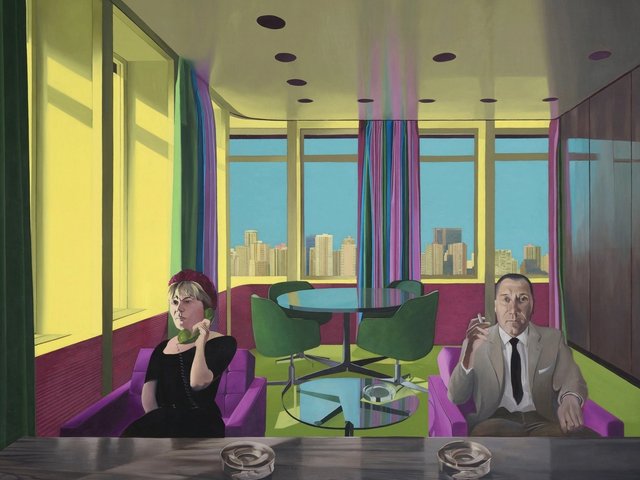London’s Annely Juda Fine Art is due to move from its premises in Dering Street, Mayfair after 35 years to a new gallery on nearby Hanover Square as part of a new phase in its nearly 60-year legacy. David Juda—who is 80 next year and who founded the gallery with his mother Annely in 1968—remains a director, though is giving over more responsibilities to his co-director Nina Fellmann, who started at the gallery as an intern in 2002 and worked her way up to director in 2019. The old gallery on Dering Street is being redeveloped.
The new location, which is due to open at the end of October, will occupy three floors of a Grade II-listed Georgian townhouse, with two floors dedicated to exhibition spaces including a former ballroom with a glass-domed ceiling. “We have a long lease, which really secures the gallery and the way we move forward into a new era,” David Juda says. “My co-director, Nina, who’s much younger than me, will also be able to continue into the future.”
The Hanover Square venue will also include a smaller gallery for new and emerging artists as Annely Juda Fine Art expands its remit to include more contemporary names. Recent additions to the roster include Nicola Turner, who is showing a large-scale work in the Unlimited section at Art Basel in June, and Sammi Lynch. “Estates are a big part of the gallery, but it’s also important to bring in new positions and new voices,” Fellmann says. “With our younger or emerging artists, we want to keep them affordable and not explode their markets. For us, it’s about building an artist’s career.”
When she started out, Annely Juda experimented with a couple of London galleries before opening Annely Juda Fine Art with her son in June 1968, in a warehouse space on Tottenham Mews in central London. The gallery moved to its current location on Dering Street off New Bond Street in Mayfair in 1990.
Rare for a British gallery at the time, Juda initially became known for exhibiting works by Russian Constructivists, as well as artists from the Bauhaus and De Stijl movements, including Wassily Kandinksy, Kazimir Malevich, Piet Mondrian, Vladimir Tatlin, Naum Gabo, El Lissitzky and Alexander Rodchenko. Early on, the dealer also took on post-war titans such as David Hockney, Leon Kossoff, Anthony Caro and David Nash.

The Hanover Square venue will also include a smaller gallery for new and emerging artists
Courtesy of Annely Juda Fine Art
Hockney will inaugurate the new space with paintings and iPad drawings of the night sky made from his Normandy studio—the first time the body of work, titled the Moon series (2020-23), has been shown in the UK. It is currently on display at the Fondation Louis Vuitton in Paris.
The final exhibition in the old space, meanwhile, is a tongue-in-cheek nod to the redevelopment of the premises. Titled Demolition, the Japanese installation artist Tadashi Kawamata has reconfigured the entire space by taking down the existing walls and erecting new ones at different angles. In a neat closing of the circle, Kawamata was also the subject of the last exhibition at the gallery’s Tottenham Mews space in 1989.
A shifting landscape
“A lot has changed since I started,” Juda says. “In the spring and summer of 1968, I worked as an artist liaison for Documenta in Kassel because I could speak German. I worked for artists including Christo and Dan Flavin. It was a fantastic time. I started full time in the gallery after that—as an assistant to my mother and learning on the job.”
Today, Juda thinks some of the bigger galleries have become “pretty corporate, which is not our way”. Fellmann agrees. “I’m not related to David, but our gallery feels like a family,” she says. The issue of finding new talent is also on Juda’s mind. As he puts it: “It’s difficult to find new artists in as much that a lot of artists are joining galleries very early on in their career, probably earlier than they should. And if you’re being patient and waiting for an artist to mature a bit, you can miss them.”
As for London’s position in the global art world, Annely Juda Fine Art is committed to its roots in the UK capital. Fellmann says the idea of opening an outpost in New York or Asia has cropped up at times, but that launching somewhere else might “water down who we are”. She adds: “Everywhere has its own problems right now, and we’re definitely committed to London. Even if we were at some point to open somewhere else, London would always be the main hub.”
Juda thinks the UK capital is “very much still the centre of the art scene”, particularly in terms of the artists living and producing work in London. “Of course, things like Brexit don’t help, but there’s just so much great art going on in London. I’m excited about our gallery’s future; it’s like a new lease of life.”





